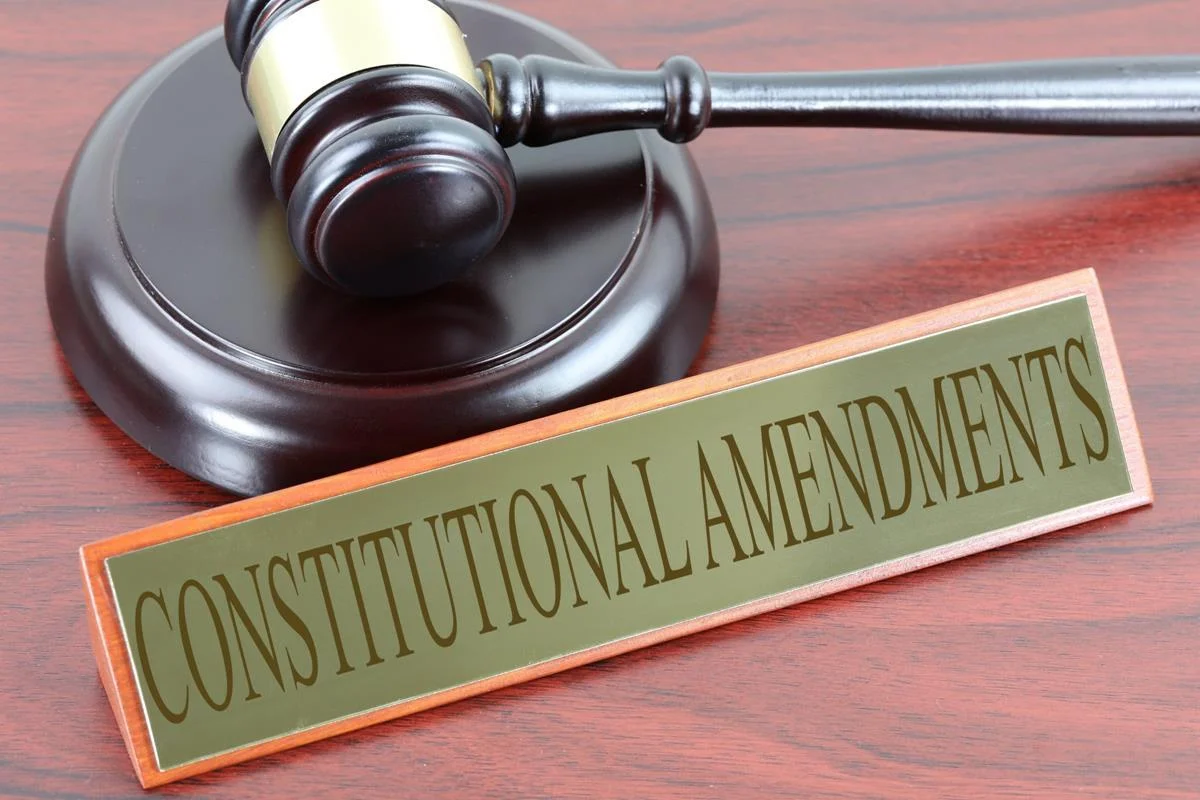The debate over Constitutional amendments in India centers on whether such amendments can override Fundamental Rights. While earlier cases like Shankari Prasad and Golak Nath addressed this issue, the 24th and 25th Amendments and later judgments, such as in Kesavananda Bharati, have shaped the current understanding. These rulings established that while amendments can change Fundamental Rights, they must respect the Constitution’s “basic features.”
Controversy Surrounding Constitution Amendments and Fundamental Rights
Debate Over Constitutional Amendments and Fundamental Rights
- A contentious debate has revolved around whether a Constitutional Amendment, carried out according to the procedures defined in Article 368, must adhere to the stipulations of Article 13(2) and be considered a “law” within the framework of Article 13(3).
- In simpler terms, it questions whether a Constitution Amendment Act could be invalidated if it attempts to diminish or contradict a Fundamental Right enshrined in Part III of the Constitution.
Enroll now for UPSC Online Course
Shankari Prasad vs Union of India (1951)
- Legal Dispute Over the First Constitutional Amendment: This legal dispute was initiated to contest the First Constitutional Amendment, which introduced Articles 31A and 31B and Ninth schedule.
- These additions limited the right to property, a fundamental right at that juncture.
- Supreme Court’s Clarification on Article 13: The Supreme Court, in its ruling on this case, clarified that the term “law” as mentioned in Article 13 specifically pertained to regular laws enacted by Parliament or State Legislatures and did not encompass Constitutional amendments made under Article 368.
- Parliament’s Authority to Amend Fundamental Rights: Consequently, the judgment established that Parliament, through a Constitutional amendment, holds the authority to modify any part of the Constitution, including the fundamental rights outlined in Part III.
Golak Nath vs State of Punjab (1967)
- Challenge to the Seventeenth Amendment Act: In the “Golak Nath” case, the Constitutional validity of the Seventeenth Amendment Act (1964) ,which inserted certain state acts in the Ninth schedule, was challenged.
- Reversal of Earlier Judgments: A majority of six judges in a Constitutional bench of eleven judges reversed the earlier judgments.
- They contended that, even though there was no explicit exception under the scope of Article 368, Fundamental Rights included in Part III of the Constitution could not, due to their inherent nature, be subject to the amendment process outlined in Article 368.
| The majority judgement in Golaknath Case invoked the concept of implied limitations on Parliament’s power to amend the Constitution. According to this view the Constitution gives a place of permanence to the fundamental freedoms of the citizen. |
- Requirement for a New Constituent Assembly: They asserted that if any of these rights were to be amended, a new Constituent Assembly would need to be convened to create a new Constitution or bring about the changes to it.
|
24th Amendment Act 1971
- Parliament’s Response to the Golak Nath Decision: In response to the “Golak Nath” decision, Parliament sought to override it by amending Article 13 and 368 itself through the Constitution (24th Amendment) Act, 1971.
- Amendment of Article 13 and 368: This amendment stipulated that a Constitution Amendment Act, passed in accordance with Article 368, would not be considered “law” within the scope of Article 13.
- Impact on Judicial Review: Consequently, the validity of a Constitution Amendment Act would not be subject to judicial review on the grounds that it affects a Fundamental Right .
25th Constitutional amendments Act 1971
This amendment introduced a new Article 31C which contained two provisions:
- Protection of Socialistic Directive Principles: No law giving effect to the socialistic Directive Principles specified in Article 39(b) and 39(c) shall be void on the ground of violation of Fundamental Rights under Article 14, Article 19 and Article 31(Right to property).
- Curtailed Judicial Review: No law containing a declaration for giving effect to such policy shall be questioned in any court on the ground that it does not give effect to such a policy (curtailed judicial review of the courts).
-
Kesavananda Bharati’s Case (1973)
- Kesavananda Bharati Case Overview: The Kesavananda Bharati v. State of Kerala was heard by a full bench of thirteen judges.
- Upheld Validity of the 24th Amendment: The majority of the full Court upheld the validity of the 24th Amendment and overruled the “Golak Nath” case and stated that Fundamental Rights can be amended under Article 368.
- Introduction of “Basic Features” Doctrine: However, the Kesavananda judgment laid down the concept that certain fundamental aspects of the Constitution, often referred to as “Basic Features,” are beyond the scope of amendment.
|
- Validation of the First Provision of the 25th Amendment Act: The Supreme Court upheld the validity of the first provision of the 25th Constitutional Amendment Act.
- However, declared the second provision of the Constitution (25th Amendment) Act, 1971, concerning Article 31C, as invalid on the ground that judicial review is a basic feature of the Constitution and can not be taken away.

|
Implications of Kesavananda Case
|
Addressing the Implications of Kesavananda Bharati: The 42nd Amendment Act, 1976
- Introduction of Clauses (4) and (5): The 42nd Amendment Act in 1976 incorporated two clauses, namely (4) and (5), into Article 368.
- Clause (5) on Unlimited Constituent Power: Clause (5) unequivocally stated that there would be no constraints on the constituent power of Parliament to amend the provisions of the Constitution, and, importantly, it declared that the validity of any Constitution Amendment Act could not be challenged in any court on any grounds (as per Clause (4)).
- Expansion of Article 31C Scope: It stated that no law giving effect to any of the Directive Principles (not just Article 39(b) and 39(c) ) can be declared null and void for violating Article 14, Article 19, and Article 31.
- Striking Down Clauses (4) and (5) in the Minerva Mill Case: In the famous Minerva Mill case (1980), the Court struck down clauses (4) and (5) of Article 368.
- The basis for this decision was that judicial review constitutes a “basic feature” of the Indian Constitutional system, which cannot be eliminated, even through the process of amending the Constitution.
- The Court also struck down the extension of Article 31C to other Directive Principles but upheld the validity of the original first provision of the Article 31C.
Article 368 as interpreted by the Supreme Court
- Procedure for Amendment Through Article 368: Article 368 outlines the prescribed procedure for amending any part of the Constitution.
- No Requirement for Referendum or Constituent Assembly: Amendments to the Constitution do not necessitate a referendum or a Constituent Assembly interpretation.
- Preservation of “Basic Features”: It’s crucial to note that no provision or portion of the Constitution can be amended if it infringes upon or undermines any of the Constitution’s “basic features”.
- This introduces a substantive constraint, apart from the explicit procedural restrictions specified in Article 368.
- The doctrine of “basic features,” established through judicial innovation, safeguards the fundamental values and overarching principles of the Constitution, rendering them beyond the reach of the amending power conferred by Article 368.
- Consequently, Parliament is precluded from amending the Constitution to negate these principles and fundamentally alter the Constitution.

Enroll now for UPSC Online Course
| Must Read | |
| Current Affairs | Editorial Analysis |
| Upsc Notes | Upsc Blogs |
| NCERT Notes | Free Main Answer Writing |
Conclusion
The Kesavananda Bharati case clarified that while Parliament can amend Fundamental Rights, it cannot alter the Constitution’s “basic features,” such as judicial review.
- Subsequent amendments, like the 42nd Amendment, faced scrutiny but reinforced that no provision could undermine these essential principles.
- This balance ensures that while the Constitution can evolve, its core values remain protected.
Sign up for the PWOnlyIAS Online Course by Physics Wallah and start your journey to IAS success today!
| Related Articles | |
| Formation of Constituent Assembly | Fundamental Rights (Article 12-35) |
| Article 368’s Role and the Constitutional Amendment Procedure | Major Constitutional Amendments |

 GS Foundation
GS Foundation Optional Course
Optional Course Combo Courses
Combo Courses Degree Program
Degree Program












